Swallows at San Juan Capistrano were driven away by development. But the birds are slowly coming back
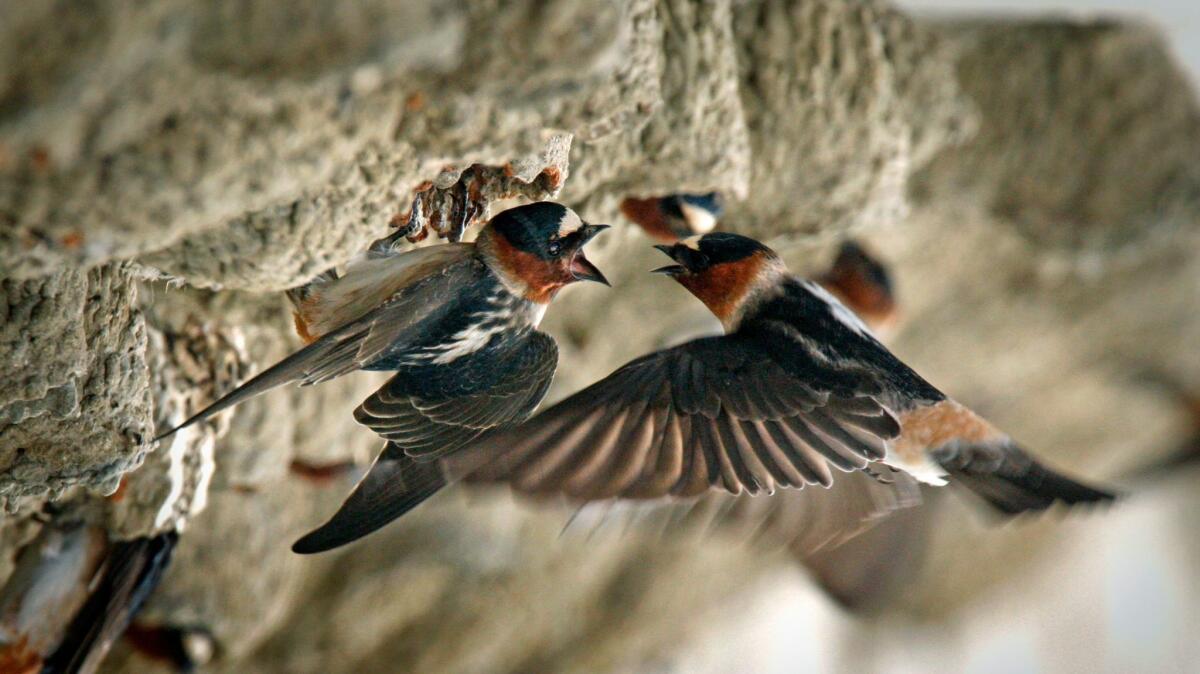
Development pushed the famous swallows away from their traditional spring haven at Mission San Juan Capistrano. That left tourists searching — mostly in vain — for the city’s most famously reliable visitors.
Now, five years after mission executive director Mechelle Lawrence Adams launched an effort to woo the swallows back to the historic landmark, she and her staff are celebrating.
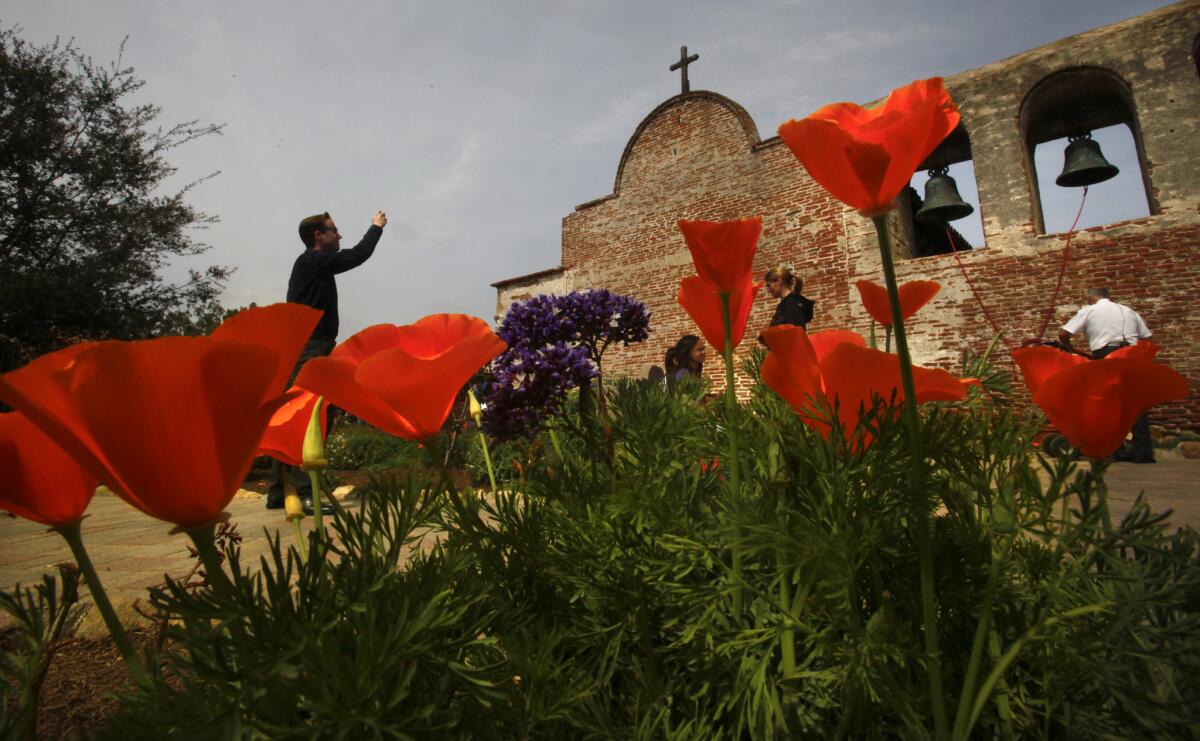
BOUNDING BACK
After years of decline, more swallows are returning
They’ve discovered two nests of swallows at the mission in the last month, and more have been spotted in flight. That’s fueled hope that the birds will re-embrace a migration routine introduced to the world by Father John O’Sullivan, who cared for the mission from 1910 until his death in 1933.
“We feel like new mothers. It’s ridiculous we’re so excited,” Lawrence Adams said in a Facebook Live video from the Great Stone Church, where there is a nest of cliff swallows. Roughed-wing swallows also are nesting near the Serra Chapel. She called the nests “a miracle to us.”
“We’ve been able to do the community a favor, and that’s returned the swallows here,” Lawrence Adams said.
Megan Dukett, the mission’s education program director, said they hope the new residents will have lots of babies and make this their home.
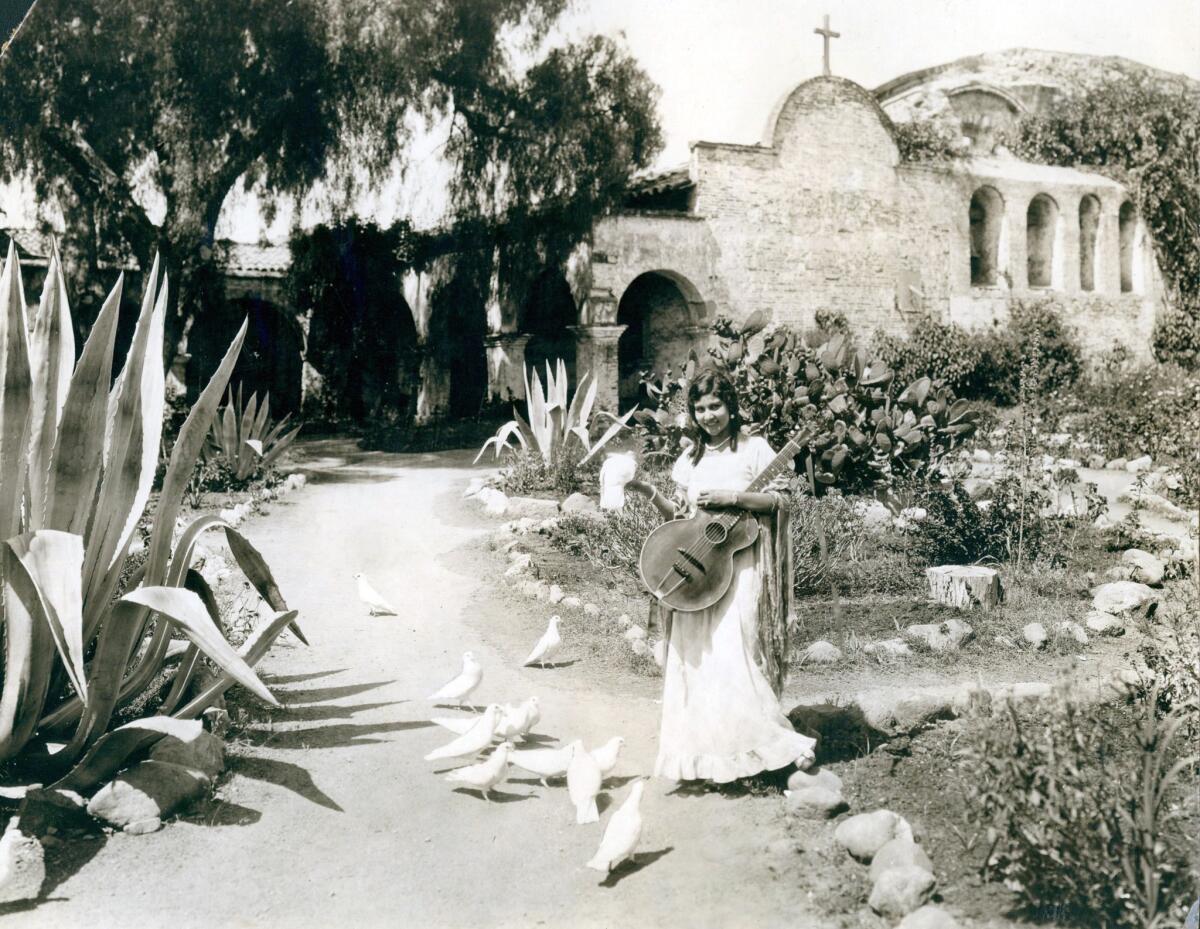
HOW THEY DID IT
The long road to luring the swallows back
Swallows had largely disappeared from the mission when Lawrence Adams took over in 2003 because of long-term renovation efforts at the Great Stone Church, she said. She took action after realizing “no one in the community was even doing anything about it,” she said.
Instead, most discussions about swallows in San Juan Capistrano centered on whether they should be depicted as fork-tailed or flat-tailed, Lawrence Adams said.
The swallows that traditionally return to the city are cliff swallows, which have flat tails, but much of the swallows imagery in San Juan Capistrano show fork tails, which belong to the barn swallow.
“Those side discussions were really not that important. What was important was how do we return the favor of making the mission a place for home?” Lawrence Adams said.
In 2012, the mission enlisted Charles Brown, a Tulsa University professor and ornithologist who began broadcasting tape-recorded calls of cliff swallows at the mission in hopes of attracting nesters.
Mission staff spotted a nest in 2013, but the birds remained scarce. Then last year, mission officials installed a 15-by-15-foot temporary wall on the east side of the Great Stone Church with about 30 plaster nests designed by Brown.
It remains there today, near a real nest spotted weeks ago.
Brown said in a mission news release that vocalization and the nests could have attracted this year’s nesters, but the rough-winged swallows likely played a bigger role. They are solitary birds who nest in walls and crevices, Brown said, but their presence could have attracted the mission’s traditional cliff swallows.
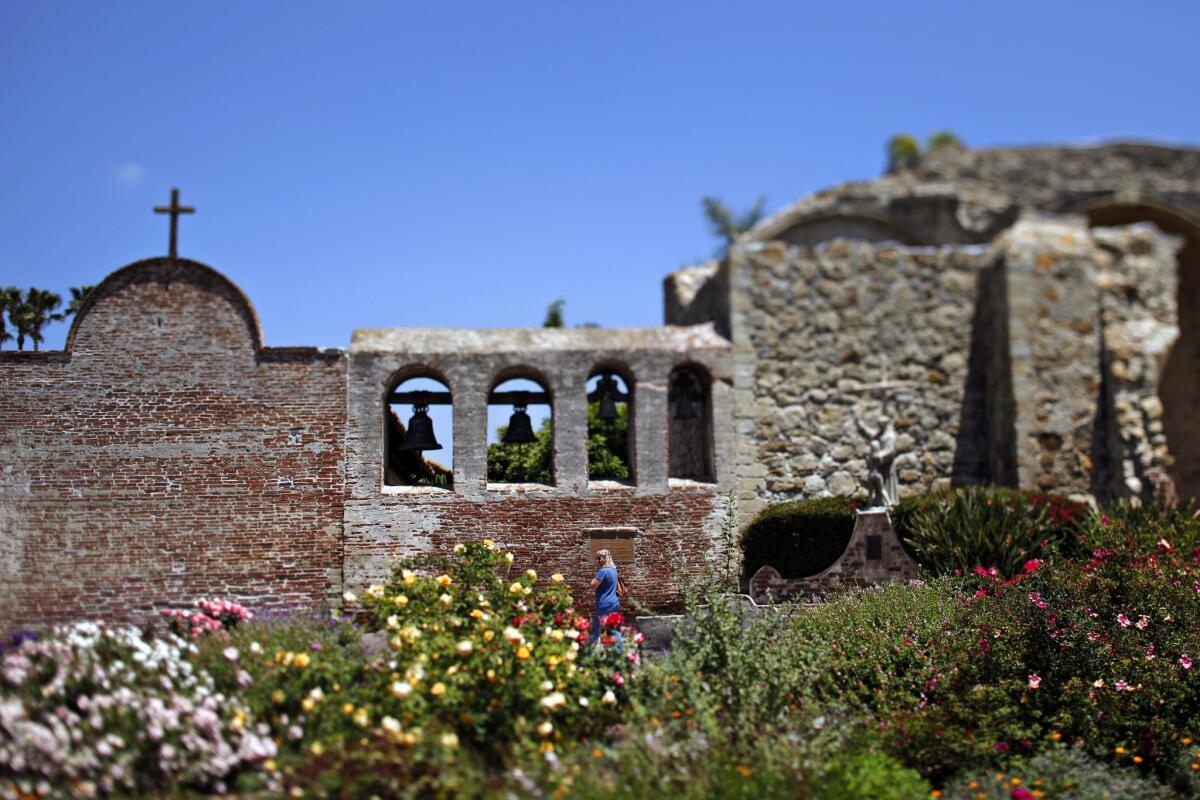
THE SWALLOWS AND THE MISSION
Why these birds are tied to San Juan Capistrano
San Juan Capistrano resident Jan Siegel, a mission volunteer and history enthusiast, said the story of the swallows was part of a marketing effort by O’Sullivan. He started the annual Return of the Swallows celebration to coincide with St. Joseph’s Day, which was also his birthday, and Los Angeles journalists broadcasted from the celebration in the 1930s.
The swallows’ spectacular return became national news.
“That was it. From that point on, it was considered absolute,” Siegel said.
San Juan Capistrano’s swallows solidified their place in popular culture when vocal group the Ink Spots recorded Leon Rene’s “When the Swallows Come Back to Capistrano” in 1940. The song was covered many times, and actor Jim Carrey’s character infamously referred to the “salmon of Capistrano” when describing Aspen, Colo., in the 1994 movie “Dumb and Dumber.”
The city’s swallows continue to be so widely known that writers worldwide use them as an analogy for repetition, tradition and recurrence.
A newspaper in China in September compared them to ongoing complaints about declining English standards in Hong Kong’s English-language media, and an Oklahoma newspaper in March invoked them when describing repeated legislative attempts to increase teacher salaries.
Lawrence Adams said she’s proud to be part of the tradition.
“I’ve had people make fun of the effort,” she said. “Now I can truly feel like after 14 years, we are returning this investment of clean spirit and energy and legacy.”
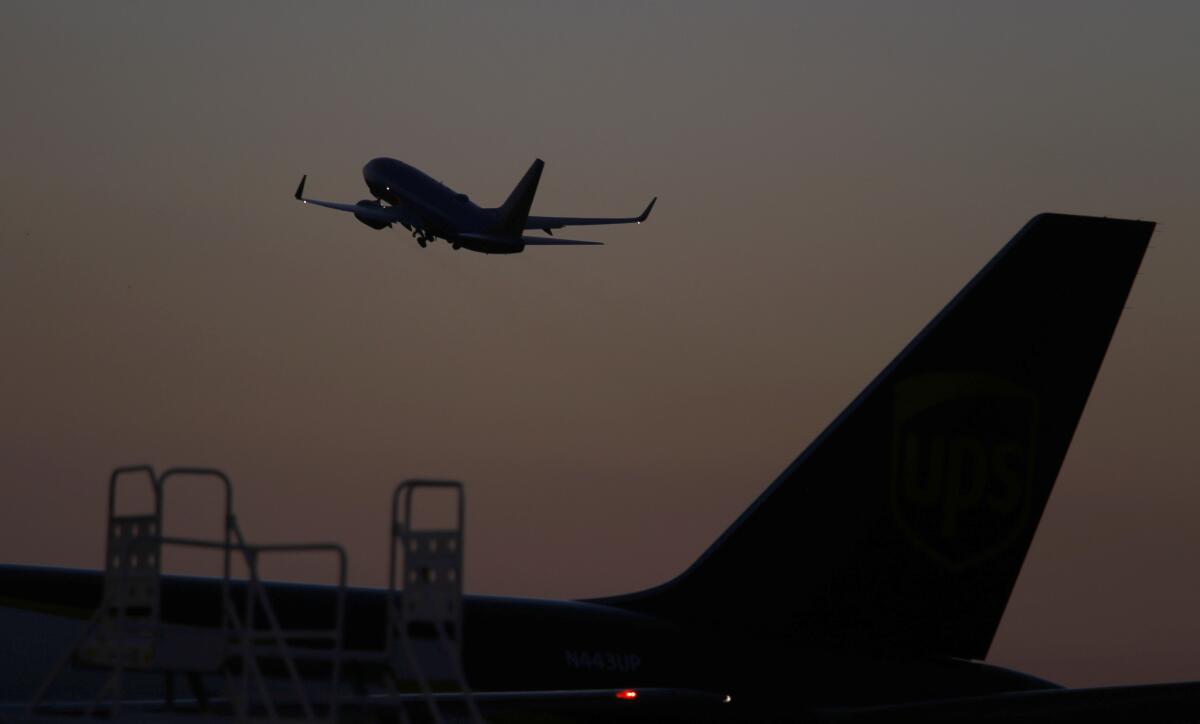
UNLOCKING A MYSTERY
Do flight patterns from an airport keep swallows away?
A split San Juan Capistrano City Council on May 16 rejected a proposal to identify swallows as a potential victim of a change in flight patterns at John Wayne Airport.
Mayor Kerry Ferguson and Councilwoman Pam Patterson wanted to mention the migration of cliff swallows in a complaint to the Federal Aviation Administration about a change in regulations that’s sending more planes over south Orange County at lower altitude.
The letter asks the FAA for clarification “regarding the potential environmental effects of the initiatives on residents and wildlife in the City of San Juan Capistrano.”
Their colleagues questioned the necessity of specifying wildlife to include swallows, with Councilman Derek Reeve implying the birds have a bigger reputation than reality supports.
“We've got a song, but I don't know if we really can,” Reeve said, trailing off. “I’ll just leave it at that.”
Ferguson said swallows expert Charles Brown told her the birds fly at about 500 feet and “aren't generally way up there in the atmosphere,” but including the birds couldn't hurt.
Councilman Brian Maryott and Mayor Pro Tem Sergio Farias sided with Reeve, and the council approved the letter with no mention of the swallows. Patterson voted against it.
“There's many cities that have in common the complaint that it’s causing additional noise or that sort of thing, but we are the ones that have the swallows coming back every year,” Patterson said.
Sign up for Essential California
The most important California stories and recommendations in your inbox every morning.
You may occasionally receive promotional content from the Los Angeles Times.







